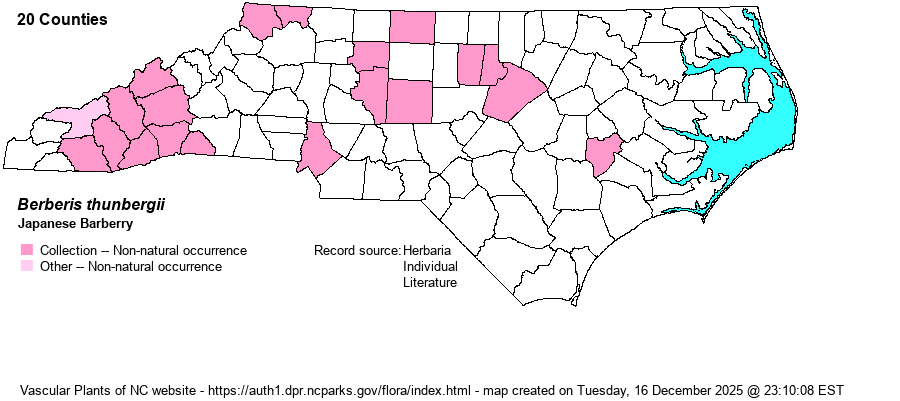| Author | de Candolle | |
| Distribution | Mostly the Mountains and Piedmont; also Lenoir County. Collections from Avery, Rowan, and Wilson counties appear to be cultivated plants.
Native of Japan; in N.A. in the midwestern and northeastern states, south to GA and MO; also maritime Canada. | |
| Abundance | Uncommon but probably increasing and spreading. | |
| Habitat | Montane slopes, deciduous forests, slopes by creeks and rivers, alluvial woods, weed at quarry. As it can and does occur into forests and woodlands, it has the potential to be quite invasive and impact native species. |
| Phenology | Flowering March-April, fruiting May-September. | |
| Identification | Japanese Barberry is a deciduous shrub mostly 3-6 feet tall with spines at the nodes. Leaves are 1/2-1 inch long and obovate, with entire margins; the rare native B. canadensis has bristly/serrate margins. Flowers 1-5 in umbels, yellow; berries are bright red. | |
| Taxonomic Comments | | |
| Other Common Name(s) | | |
| State Rank | SE | |
| Global Rank | GNR | |
| State Status | | |
| US Status | | |
| USACE-agcp | UPL link |
| USACE-emp | FACU link |

